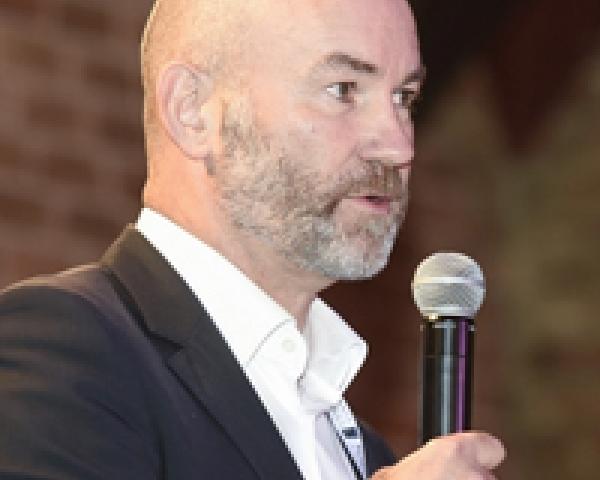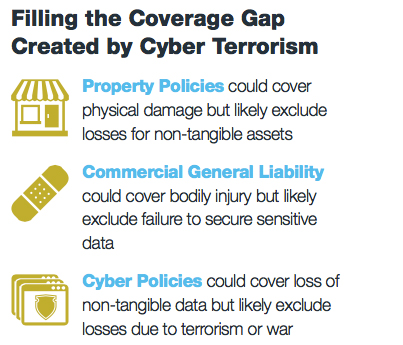 In no particular order...
Prediction #1
Insurers will create lifestyle apps that provide additional consumer value on a continuing basis. Continuous consumer engagement will start to replace price as the key buying criterion. The result will be sticky insurance with strong brand loyalty.
Prediction #2
The person-to-person (P2P) insurance business model will struggle to reach scale in its current form. This will drive the P2P insurers to find new ways to replace the traditional carrier model, and we will see signs of a completely new business model for insurance. That will scale.
Prediction #3
Much greater levels of personalized rating will become widely available using new sources of data from technology such as wearables, the Internet of Things and smartphone apps. This will lead to variable premiums over the policy term to encourage better behavior (although insurers will hold back and not introduce corresponding punishments in 2016).
Prediction #4
"All in one policy" cover (aka, all-risks insurance) will emerge for consumer protection. Policyholders will be able to insure their lifestyle (their home, motor, dog, holidays, iPhone, treasures, travel) in a single policy based on highly personalized risk assessment through a digital platform.
Prediction #5
"All in one place" platforms (aka a concierge service) will replace traditional intermediaries with a digital broker. These services will consolidate multiple policies, converge with financial planning tools and provide robo-advice on gaps and duplication in cover.
Prediction #6
New entrants will come into the market with highly sophisticated data modeling and predictive analytics solutions. They will exploit mass-scale technologies, high-performance computing and techniques developed in high-frequency trading.
Prediction #7
Convenience and the ability to digitally turn insurance cover on and off as needed will be steadily accepted and adopted. As will microinsurance, sharing insurance and pay-per-mile. Unit premiums will be higher, but this will be outweighed by Millennial attitudes toward insurance cover and paying a price for convenience.
Prediction #8
The poorest in our world are the ones who need insurance the most. In 2016, the insurance industry will (finally) start to better serve the massively underinsured populations in developing countries. This will be driven by a combination of the massive market opportunity that exists for insurance, global economic forces and a socio-political agenda.
Prediction #9
There will be widespread deployment by traditional insurers of new digital solutions to reduce cost of claims and loss handling. Serving both ends of the insurance workflow, these tech solutions will enable better collection of data and evidence to improve risk rating at the front end and the claims handling processes, especially at first notice of loss (FNOL), at the back.
Prediction #10
2017 will be the year of block chain and insurance. No list of predictions would be complete without reference to block chain, but IMHO it is going to take all of 2016 for the insurance industry to get to grips with what block chain is, what it can really do for insurance and (most important) why we should use block chain as opposed to any other database or enabling technology.
Don't get me wrong, for I am squarely in the camp that believes "block chain is the next Internet." And we will continue to see a lot of block chain insurance activity throughout the year. But adoption in insurance won't take hold until we've seen 2016 out.
In no particular order...
Prediction #1
Insurers will create lifestyle apps that provide additional consumer value on a continuing basis. Continuous consumer engagement will start to replace price as the key buying criterion. The result will be sticky insurance with strong brand loyalty.
Prediction #2
The person-to-person (P2P) insurance business model will struggle to reach scale in its current form. This will drive the P2P insurers to find new ways to replace the traditional carrier model, and we will see signs of a completely new business model for insurance. That will scale.
Prediction #3
Much greater levels of personalized rating will become widely available using new sources of data from technology such as wearables, the Internet of Things and smartphone apps. This will lead to variable premiums over the policy term to encourage better behavior (although insurers will hold back and not introduce corresponding punishments in 2016).
Prediction #4
"All in one policy" cover (aka, all-risks insurance) will emerge for consumer protection. Policyholders will be able to insure their lifestyle (their home, motor, dog, holidays, iPhone, treasures, travel) in a single policy based on highly personalized risk assessment through a digital platform.
Prediction #5
"All in one place" platforms (aka a concierge service) will replace traditional intermediaries with a digital broker. These services will consolidate multiple policies, converge with financial planning tools and provide robo-advice on gaps and duplication in cover.
Prediction #6
New entrants will come into the market with highly sophisticated data modeling and predictive analytics solutions. They will exploit mass-scale technologies, high-performance computing and techniques developed in high-frequency trading.
Prediction #7
Convenience and the ability to digitally turn insurance cover on and off as needed will be steadily accepted and adopted. As will microinsurance, sharing insurance and pay-per-mile. Unit premiums will be higher, but this will be outweighed by Millennial attitudes toward insurance cover and paying a price for convenience.
Prediction #8
The poorest in our world are the ones who need insurance the most. In 2016, the insurance industry will (finally) start to better serve the massively underinsured populations in developing countries. This will be driven by a combination of the massive market opportunity that exists for insurance, global economic forces and a socio-political agenda.
Prediction #9
There will be widespread deployment by traditional insurers of new digital solutions to reduce cost of claims and loss handling. Serving both ends of the insurance workflow, these tech solutions will enable better collection of data and evidence to improve risk rating at the front end and the claims handling processes, especially at first notice of loss (FNOL), at the back.
Prediction #10
2017 will be the year of block chain and insurance. No list of predictions would be complete without reference to block chain, but IMHO it is going to take all of 2016 for the insurance industry to get to grips with what block chain is, what it can really do for insurance and (most important) why we should use block chain as opposed to any other database or enabling technology.
Don't get me wrong, for I am squarely in the camp that believes "block chain is the next Internet." And we will continue to see a lot of block chain insurance activity throughout the year. But adoption in insurance won't take hold until we've seen 2016 out.Top 10 InsurTech Predictions for 2016
InsurTech will spur a big year, leading to "all-risks insurance," insurance that can be turned on and off, better microinsurance and more.

 In no particular order...
Prediction #1
Insurers will create lifestyle apps that provide additional consumer value on a continuing basis. Continuous consumer engagement will start to replace price as the key buying criterion. The result will be sticky insurance with strong brand loyalty.
Prediction #2
The person-to-person (P2P) insurance business model will struggle to reach scale in its current form. This will drive the P2P insurers to find new ways to replace the traditional carrier model, and we will see signs of a completely new business model for insurance. That will scale.
Prediction #3
Much greater levels of personalized rating will become widely available using new sources of data from technology such as wearables, the Internet of Things and smartphone apps. This will lead to variable premiums over the policy term to encourage better behavior (although insurers will hold back and not introduce corresponding punishments in 2016).
Prediction #4
"All in one policy" cover (aka, all-risks insurance) will emerge for consumer protection. Policyholders will be able to insure their lifestyle (their home, motor, dog, holidays, iPhone, treasures, travel) in a single policy based on highly personalized risk assessment through a digital platform.
Prediction #5
"All in one place" platforms (aka a concierge service) will replace traditional intermediaries with a digital broker. These services will consolidate multiple policies, converge with financial planning tools and provide robo-advice on gaps and duplication in cover.
Prediction #6
New entrants will come into the market with highly sophisticated data modeling and predictive analytics solutions. They will exploit mass-scale technologies, high-performance computing and techniques developed in high-frequency trading.
Prediction #7
Convenience and the ability to digitally turn insurance cover on and off as needed will be steadily accepted and adopted. As will microinsurance, sharing insurance and pay-per-mile. Unit premiums will be higher, but this will be outweighed by Millennial attitudes toward insurance cover and paying a price for convenience.
Prediction #8
The poorest in our world are the ones who need insurance the most. In 2016, the insurance industry will (finally) start to better serve the massively underinsured populations in developing countries. This will be driven by a combination of the massive market opportunity that exists for insurance, global economic forces and a socio-political agenda.
Prediction #9
There will be widespread deployment by traditional insurers of new digital solutions to reduce cost of claims and loss handling. Serving both ends of the insurance workflow, these tech solutions will enable better collection of data and evidence to improve risk rating at the front end and the claims handling processes, especially at first notice of loss (FNOL), at the back.
Prediction #10
2017 will be the year of block chain and insurance. No list of predictions would be complete without reference to block chain, but IMHO it is going to take all of 2016 for the insurance industry to get to grips with what block chain is, what it can really do for insurance and (most important) why we should use block chain as opposed to any other database or enabling technology.
Don't get me wrong, for I am squarely in the camp that believes "block chain is the next Internet." And we will continue to see a lot of block chain insurance activity throughout the year. But adoption in insurance won't take hold until we've seen 2016 out.
In no particular order...
Prediction #1
Insurers will create lifestyle apps that provide additional consumer value on a continuing basis. Continuous consumer engagement will start to replace price as the key buying criterion. The result will be sticky insurance with strong brand loyalty.
Prediction #2
The person-to-person (P2P) insurance business model will struggle to reach scale in its current form. This will drive the P2P insurers to find new ways to replace the traditional carrier model, and we will see signs of a completely new business model for insurance. That will scale.
Prediction #3
Much greater levels of personalized rating will become widely available using new sources of data from technology such as wearables, the Internet of Things and smartphone apps. This will lead to variable premiums over the policy term to encourage better behavior (although insurers will hold back and not introduce corresponding punishments in 2016).
Prediction #4
"All in one policy" cover (aka, all-risks insurance) will emerge for consumer protection. Policyholders will be able to insure their lifestyle (their home, motor, dog, holidays, iPhone, treasures, travel) in a single policy based on highly personalized risk assessment through a digital platform.
Prediction #5
"All in one place" platforms (aka a concierge service) will replace traditional intermediaries with a digital broker. These services will consolidate multiple policies, converge with financial planning tools and provide robo-advice on gaps and duplication in cover.
Prediction #6
New entrants will come into the market with highly sophisticated data modeling and predictive analytics solutions. They will exploit mass-scale technologies, high-performance computing and techniques developed in high-frequency trading.
Prediction #7
Convenience and the ability to digitally turn insurance cover on and off as needed will be steadily accepted and adopted. As will microinsurance, sharing insurance and pay-per-mile. Unit premiums will be higher, but this will be outweighed by Millennial attitudes toward insurance cover and paying a price for convenience.
Prediction #8
The poorest in our world are the ones who need insurance the most. In 2016, the insurance industry will (finally) start to better serve the massively underinsured populations in developing countries. This will be driven by a combination of the massive market opportunity that exists for insurance, global economic forces and a socio-political agenda.
Prediction #9
There will be widespread deployment by traditional insurers of new digital solutions to reduce cost of claims and loss handling. Serving both ends of the insurance workflow, these tech solutions will enable better collection of data and evidence to improve risk rating at the front end and the claims handling processes, especially at first notice of loss (FNOL), at the back.
Prediction #10
2017 will be the year of block chain and insurance. No list of predictions would be complete without reference to block chain, but IMHO it is going to take all of 2016 for the insurance industry to get to grips with what block chain is, what it can really do for insurance and (most important) why we should use block chain as opposed to any other database or enabling technology.
Don't get me wrong, for I am squarely in the camp that believes "block chain is the next Internet." And we will continue to see a lot of block chain insurance activity throughout the year. But adoption in insurance won't take hold until we've seen 2016 out.














